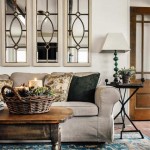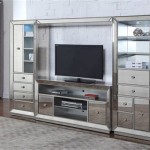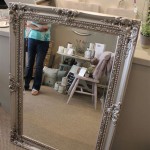How To Hang A Heavy Mirror On A Lath and Plaster Wall
Hanging a heavy mirror on a lath and plaster wall requires a different approach than hanging it on drywall. The inherent nature of lath and plaster—thin wooden slats covered with a brittle plaster layer—presents unique challenges regarding weight bearing and finding secure anchoring points. Proper preparation and the right hardware are crucial for ensuring the mirror is securely mounted and the wall remains undamaged.
Assessing the Wall and Mirror
Before beginning, carefully examine both the wall and the mirror. Understanding their characteristics will inform the best hanging method. Consider the following:
- Weight of the Mirror: The heavier the mirror, the more robust the hanging method must be.
- Wall Condition: Check for any existing cracks or damage to the plaster. Repairing these beforehand is essential.
- Mirror's Hanging Hardware: Identify the type of hardware attached to the mirror (D-rings, wire, or keyhole slots) as this dictates the necessary wall anchors.
- Wall Stud Location: Locating and utilizing wall studs provides the most secure anchoring but is not always possible depending on the mirror's size and hanging hardware.
Locating Wall Studs
While lath and plaster walls often conceal the studs more effectively than drywall, locating them is still possible and highly recommended for heavier mirrors. Several methods can be used:
- Electronic Stud Finder: This device uses electronic signals to detect changes in density within the wall, indicating the presence of a stud.
- Magnetic Stud Finder: These finders locate the nails or screws used to attach the lath to the studs. This method can be less reliable than electronic finders in older homes where ferrous metal fasteners may not have been used.
- Tapping Method: Gently tap along the wall, listening for a change in sound from hollow to solid. This method requires practice and a keen ear.
- Small Exploratory Hole: As a last resort, a small pilot hole can be drilled to confirm the presence of a stud. This hole can be easily patched if a stud is not found.
Choosing the Right Hanging Hardware
Selecting appropriate hanging hardware is paramount for supporting the mirror's weight and preventing damage to the wall. Consider these options:
- Heavy-Duty Picture Hooks: These hooks are rated for specific weight capacities and are suitable for lighter to medium-weight mirrors, especially when anchored into studs.
- Toggle Bolts: For heavier mirrors or when studs are not accessible, toggle bolts provide a secure hold by expanding behind the plaster. They require drilling a larger hole.
- Molly Bolts: These bolts also expand behind the wall, offering a strong hold in lath and plaster. They are suitable for medium to heavy mirrors.
- French Cleats: This system uses two interlocking wooden pieces, one attached to the wall and the other to the mirror. French cleats offer exceptional weight distribution and are ideal for very heavy mirrors.
Installation Process
Once the wall studs are located (if applicable) and the appropriate hardware is selected, the following steps outline the general installation process:
- Mark the Desired Hanging Location: Use a level and pencil to mark the desired position of the mirror on the wall.
- Pre-Drill Holes: Drill pilot holes appropriate for the chosen hardware. For toggle bolts and molly bolts, ensure the hole is large enough for the anchor to pass through. For screws directly into studs, pre-drilling prevents the wood from splitting.
- Install Anchors (if necessary): Install toggle bolts, molly bolts, or other chosen anchors following the manufacturer's instructions.
- Attach Hanging Hardware to the Wall: Securely attach picture hooks, the cleat portion for a French cleat system, or screw directly into studs.
- Hang the Mirror: Carefully lift and hang the mirror onto the installed hardware. Ensure it is level and secure.
Repairing Existing Wall Damage
If the wall has existing cracks or damage, addressing these issues before hanging the mirror is essential. Minor cracks can be filled with plaster repair compound. Larger holes or crumbling areas may require patching with a mesh backing for added support. Allow ample drying time before hanging the mirror.
Additional Tips for Hanging Heavy Mirrors
Several additional considerations can further enhance the security and stability of a heavy mirror on a lath and plaster wall:
- Use a Level: Ensure the mirror hangs perfectly straight by using a level throughout the installation process.
- Consider Adhesive: For added security, especially with heavier mirrors, consider using mirror adhesive in conjunction with mechanical fasteners. Apply the adhesive to the back of the mirror before hanging.
- Seek Assistance: Enlist the help of another person when hanging a heavy mirror. This helps with maneuverability, prevents accidents, and ensures proper alignment.
- Consult a Professional: If unsure about any aspect of the process, particularly if dealing with extremely heavy mirrors or significant wall damage, consulting a professional handyman or contractor is always advisable.
Hanging Heavy Framed Mirrors Lath Plaster Walls The Picture Framers Grumble

How To Hang A Heavy Mirror On Lath And Plaster Cohesive Homes

How To Hang A Heavy Mirror She Holds Dearly
Hanging Heavy Framed Mirrors Lath Plaster Walls The Picture Framers Grumble

How To Hang A Heavy Mirror She Holds Dearly

Hanging Heavy Mirror On Plaster Walls 6 Steps With Pictures Instructables
Hanging Heavy Framed Mirrors Lath Plaster Walls The Picture Framers Grumble

How To Hang A Heavy Mirror On Plaster Wall Walls

How To Hang A Heavy Mirror She Holds Dearly
How To Hang A 100 Pound Mirror On Drywall Quora








